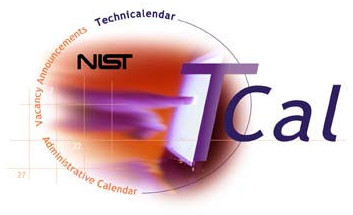
August 17 to August 21, 2009
The NIST Technicalendar is issued each Friday. All items MUST be submitted electronically from this web page by 12:00 NOON each Wednesday unless otherwise stated in the NIST Technicalendar. The address for online weekly editions of the NIST Technicalendar and NIST Administrative Calendar is: http://www.nist.gov/tcal.